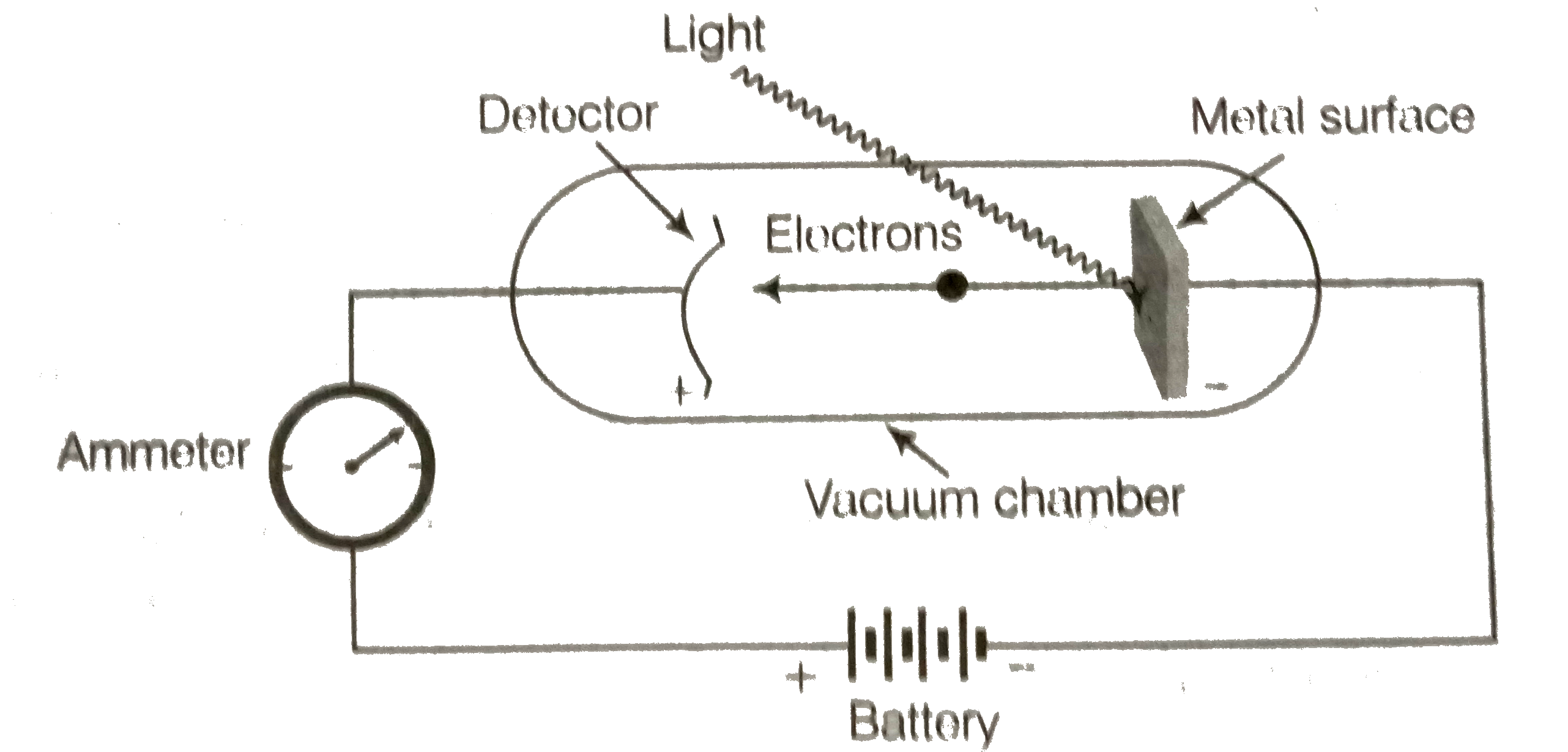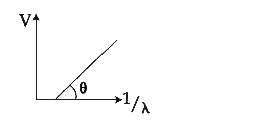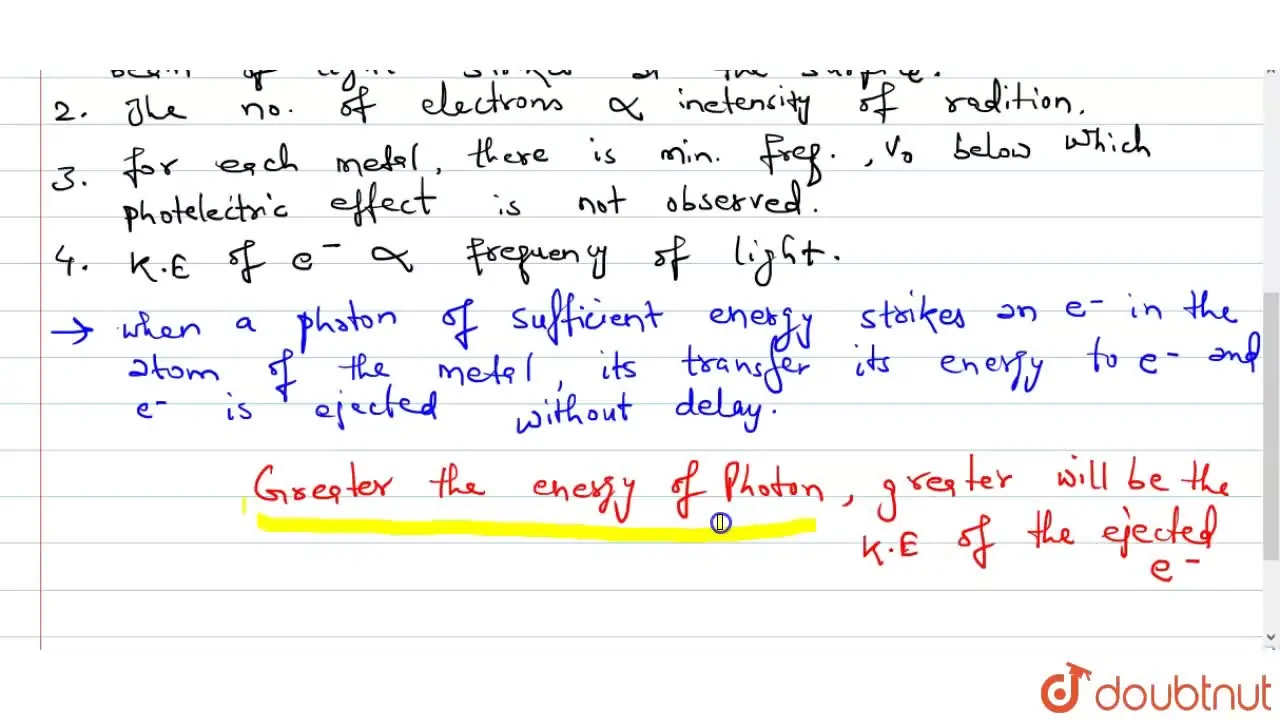What is photoelectric effect? State t he result of photoelectric effect experiment that could not be explained on the basis of laws of classical physics. Explain this effect on the b asis of quantum theory of electromagnetic radiations.
Photoelectric effect when radiation with certain minimum frequency (V0) strke the surface of a metal. The elec trons are ejected from the surface of the metal. This phenomenon is called photoelectric effect. The electrons emitted are called photoelectrons.

Equipment for studying the photoelectric effect Light of a particular frequency strikes a clean metal surface inside a vacuum chamber.
Electrons are ejected from the metal and are counted by a detector that measures their kinetic energy
The result observed in this experiment were
(i) The electrons are ejected from the metal surface as soon as the beam of light strikes the surface. i.e. there is no tike lag between the striking of light beam and the ejection of electrons from the metal surface.
(ii) The number of electorons ejected is proportional to the intensity or brightness of light.
(iii) For each metal, there is a characteristic minimum frequency, v0 (also known as threshold frequency) below which photoelectric effect is not observed. At a f requency v>v0 the ejected electrons come out with certain kinetic energy. the kinetic energies of these ejections increases withthe increase of frequency of the light used
The above observation cannot be explained by the electromagnetic wave theory. According to this theory. since radiations were continous. Therefore, it should be possible to accumulate energy on the surface of the metal. irrespective of it frequency and thus, radiations of al frequencies should be able to eject electrons.
Similarly according to this theory the energy of the electrons ejected should depend upon the intensity of the incident radiation.
Particle Nature of Electromagnetic Radiaton
To explain the phenomena of black body radiation and photoelectric effect. Max planck in 1900, put forward a theory known after his naem as Planck's quantum theory. This theory was further extended by Einstein in 1905.
(i) The radiant energy is emitted or absorbed not continously but discontinously in the form of small discrete packets of energy Each such packet of energy is called a quantum in case of light qunatum of energy is called a photon.
(ii) The energy of each quantum is directly proportional to the frequency of the radiation
i.e. E∝v or E=hv
where h is a proportionality constnat called planck's constnat its value to approximately equal to 6.626×10−27 erg s or 6.626×10−34J s.
(iii) The toal amount of energy emitted or absorbed by a body will be some whole number quanta.
Hence,E=nhv (where,nis any integer)
Related Playlists
Similar Questions
Describe photoelectric effect and state the laws of photoelectric emission.
View SolutionWrite the three characteristic features in photoelectric effect which cannot be explained on the basis of wave theory of light, but can be explained by using Einstein's equation.
View SolutionWrite Einstein's photoelectric equation. State clearly any two salient features observe in photoelctric effect, which can be explained on the basis of the above equation.
View SolutionWave nature of light cannot explain photoelectric effect because in photoelectric effect , it is seen that
View SolutionWrite Einstein's photoelectric equation.
Write the three salient features observed in photoelectric effect which can be explained using this equation.View SolutionWith respect to electromegnetic theory of light, the photoelectric effect is best explained by statement
View Solution(a) Why photoelectric effect cannot be explained on the basis of wave nature of light?
(b) Write the basic features of photon picture of electromagnetic radiation on which Einstein's photoelectric equation is based.View SolutionEjection of the photoelectron from metal in the photoelectric effect experiment can be stopped by applying 0.5 V when the radiation of 250 nm is used. The work function of the metal is
View SolutionIn a photoelectric effect experiment, the graph of stopping potential V versus reciprocal of wavelength obtained is shown in the figure. As the intensity of incident radiation is increased :
 View Solution
View SolutionPoint out two distinct features observed experimentally in photolelectric effect which cannot be explained on the basis of wave theory of light. State how the 'photon picture' of light provides an explanation of these features.
View Solution


